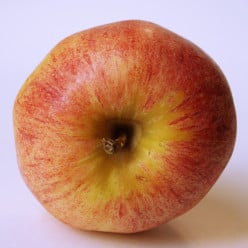Is there any pitch difference between D-sharp and E-flat when you are playing on
Is there any pitch difference between D-sharp and E-flat when you are playing on the violin?
There is no difference in pitch as D shapr and E flat are the same note, therefore the same pitch.
E flat is absolutely higher than d sharp albeit by a misicule amount. If you do not play only a keyboard you may not know. Piano tuners have to compromise when tuning, if you play fifths all up the keyboard you will hear they aren't all pure.
I know that, on piano, or guitar these are the same tones, but on violin or any other non-tempered instrument maybe there is a small difference (koma)?
Although I am not a violist, as a piano and sax player, I assume that D# and Eb are the same note in music. Why would it be different between one musical instrument vs another? I just don't believe there is a difference on any instrument. Music is music and whether the piano or violin, D# is D# and Eb is Eb AND they are the same note. Enlighten me.
Because members of the violin family (violin, viola, cello, and bass) are not fretted, they, as well as the human voice and some winds, are the only instruments that can hit intermediate frequencies between half steps without stopping to retune.
On keyboard instruments ever since the 17th century, and on fretted instruments since I-don't-know-when, D# and Eb are the same pitch. These instruments have fixed pitches such that, once they are tuned, the pitch remains the same until the next tuning or until they go out of tune. Guitarists can bend the pitch in a way pianists cannot, but still not as much as violinists can.
On non-fretted stringed instruments and some wind instruments, the pitch of an individual note is very strongly under the control of the performer. A slight change of the finger position or a change in embouchure or breathing can alter the pitch dramatically. A good performer will make those changes almost instinctively, either as a result of training or just from listening to what sounds good, and they may not even be aware they are making a change.
In studies of acoustics, tuning, and harmony, the notes of the musical scale are based on mathematical ratios between notes. The notes can sound right while in one key; but when the music modulates into another key, or when a piece is transposed to a different key, the ratios and tuning will be a little "off." This became such an issue with keyboard instruments, as they became more popular, that the concept of "equal temperament" (or tuning) came about. (Remember Bach's "Well-Tempered Clavier"?)
To purists, the distinction between D# (a little lower) and Eb (a little higher) is an important one, and I have seen a lot of discussion of the superiority of "just tuning" over equal tuning; but I must admit, I don't actually like the sound of just tuning on a keyboard instrument, even in music played in the right key. To me, it sounds too much like a calliope.
On a violin, a beginning student will first learn that D# and Eb are the same, but as they advance they will develop more subtlety. When the musician can adjust each note to what sounds right, the difference between the notes can be a good thing. When a musician is locked-in to one tuning (as on a piano), whether it is just tuning or equal or mean tuning (a third type), someone may be unhappy with the results some of the time.
The technical difference between D# and Eb is, as another post says, the difference of a Pythagorean or ditonic comma, about 1/4 of a semitone. For a mathematical explanation, see the Hubs by thunderwave or read "Pythagorean comma" in Wikipedia.
The bottom line, though, is that in music it should *sound* right, even if there is some intentional dissonance.This is a very good answer. I was never told that they were the same when I began learning to play the violin, so I was confused when I began learning music theory.
Thank you, ViolinByCourtney. My comment about what a student first learns came from my own limited violin lessons; I'm glad your comment provides additional, better information about the teaching/learning process. I wish I could revise my answer.
Of course they are the same note. But when you are playing on a violin, there is surely another pitch or many of them. When there is no frets there is variation all the way up and down the neck. Many of us may or may not be able to really tell the differences, but a good musician or violinist will be be able to tell. Do we have a name for it? Im sure there is. But do we really need to go that in depth when the normal human ear is not gonna know the difference.
Related Discussions
- 10
What is the difference between a fiddle and a violin?
by Jennifer Arnett 6 years ago
What is the difference between a fiddle and a violin?
- 29
What musical instrument produces the most beautiful music to your ears?
by Janis Leslie Evans 7 years ago
What musical instrument produces the most beautiful music to your ears?I prefer the sound of a classical piano or a romantic violin. Share your personal favorites.
- 18
How important do you think it is to learn a musical instrument when you are a ch
by Penelope Hart 6 years ago
How important do you think it is to learn a musical instrument when you are a child?
- 3
How do you tell the difference between a red maple and a japanese maple tree?
by PermissionGiver 12 years ago
How do you tell the difference between a red maple and a japanese maple tree?
- 4
What is the difference between the Pope and Ceasar? How are they the same?
by Mikel G Roberts 12 years ago
What is the difference between the Pope and Ceasar? How are they the same?They both claim to be God on earth or God's representitive on earth. They both require absolute obedience... They both are "in office" until death. They are both elected by the "senate". They both rule...
- 3
What's the difference between a matador and a toreador?
by Jeff Berndt 12 years ago
What's the difference between a matador and a toreador?The words get used almost as synonyms in English, but are they also synonymous in Spanish?











